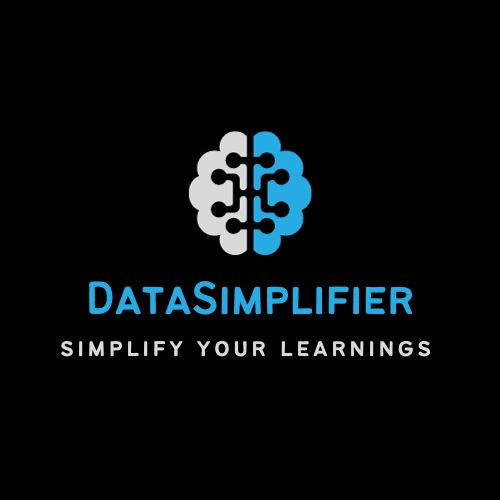Introduction
Data drift is a subtle phenomenon one deals with while working with data in data science, which is a change in the underlying distribution of data with time. This is an important idea that is often asked in interview questions for positions in Artificial Intelligence (AI), Machine Learning (ML), Data Analytics, etc.

One of the most important is how to detect and handle data drift in Python, Java, R, or C#. Learning to detect and respond to data drift is critical to creating models that are sound, exact, and reliable. This is the complete guide that will prepare you with all the knowledge to crack any question related to detecting & handling data drift in data science. Say goodbye to worrying about data drift, this guide will showcase the full pipeline. We will talk not only about how to detect data drift but also how to handle it properly.
As you perform a machine-learning task, you collect data over time, and what a lot of people don’t realize is that, even for a particular machine-learning task, data can drift; that is, the relationships between certain variables can change, or the data itself can change. This can impact accuracy for your AI/ML models, and cause them to make errors in their predictions.
Professions should know Detecting & handling data drift in R, Python, or any other programming language. We’ll go in-depth with practical examples and techniques to detect and resolve data drift issues, and that’s exactly what this article covers. Now without further ado, let us go straight into the details of detecting and handling data drift. Well, this detailed guide will be your go-to weapon to smash through all interview questions related to this key component of data science.
Data drift is not niche anymore in this rapidly evolving data-driven world. It’s a vital part of (AI/ML) models’ performance upkeep and correction. So, this article will be a comprehensive overview of Detecting & handling data drift in Python which will help you to understand its nuances and challenges deeply. If you are an aspiring data science student or you are currently working in some facet of a data science career, this final guide will empower.

Detecting Data Drift
Statistical tests, monitoring techniques and visual inspection of data distributions are some of the ways to identify data drift.
Here are some of the statistical methods to compare the distributions of the data during two or more different time periods: (a). These tests identify statistically significant shifts.
Tracking Methods: Variation in the basic statistics including mean, variance, and frequency of some values can give indications about shifting in the data. This facilitates real-time identification of data drift.
Visual Inspection: Using histograms, box plots, and scatter plots to visualize your data can help you to see how the data has changed over time. These visualizations may help detect trends that signal potential data drift.

Handling Data Drift
Now that you’ve detected data drift, you need to know what to do about it. The specific approach varies depending on what kind and how much drift has occurred.
Retrain Your Models: One option is to retrain your models on the updated dataset so that your models can account for the changed distribution of the new data. This approach keeps your models accurate and reliable in the long run.
Feature Engineering: If the data drift affects some particular variables, tweaking or adding new features can help. This process may involve scaling features, generating new features, or eliminating old ones, to improve the performance of the model.
Improving the Structure of Sentence: In scenarios where new data is not available in sufficient amounts, data augmentation methods are utilized. These techniques augment existing data to generate new potential sample points to enhance predictive power.
Analysis of Data Drift and Detection of Data Drift
Traditional methods of evaluating data drift usually fall short with complex data sets, therefore modern techniques such as machine learning-based drift detection can be more efficient ways of identifying drift. By understanding these techniques, you can design models robust enough to tackle even the subtlest data variations.

Conclusion
We have looked into the details of data drift, right from the detection of it till how to deal with it. This in-depth article will help you immensely during the interview preparations & your growth in the AI/ML domain. In this post we have seen several approaches to detect and react to data drift – be it statistical tests or feature engineering. These tricks will help you create robust models and feel confident that you are making evidence-based decisions. C#, Java, Python, or R — you need a solid recipe to detect and handle data drift, and this guide will guide you through interview questions related to it.
All this wisdom shared in this article will surely come in handy during your career adventure. Note: As always, be sure to keep learning and stay up to date on new trends in this rapidly evolving domain!
If you’re looking for more opportunities to broaden your knowledge and opportunities to excel in the competitive job market, then join our diverse network of 10+ Telegram channels related to AI, ML, and data science. Such channels can equip you with useful information, resources, and help in your continuing professional development. And join our free job alert groups — we often post data science, AI, and ML internships and job listings.
Drop the details of your Telegram channel in the comments below for a limited time only, and we will send an invitation to join us in our premium telegram group. Now this is a great community of peers, experts, and mentors making up a unique support network for all of your needs on your data science journey. You need this helping hand.
By being more connected to existing community channels where you can share ideas and discuss developments, newscasters will have an advantage when it comes to staying ahead of the pack. This is your ticket to dive deeper into these tools and increase your horizons for tomorrow.
Get access to even more jobs We regularly post job openings in AI, ML, and data analytics, so you’ll be one of the first to hear about exciting opportunities.
Sharing exclusive opportunities, including data science internships, on our Telegram groups. We post such listings for these internships which could make you started for your career!
Our Internship Telegram Group:
We have dedicated Telegram groups for Internship opportunities in Data Science, Machine Learning, and AI. Internships are posted here regularly for Indian students helping them gauge their skills and interest as that can lead into a stable career path. Network to discover great career progression opportunities.
Share the post with your friends

